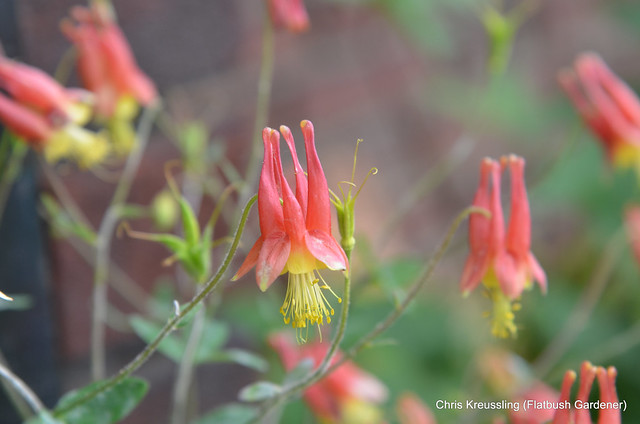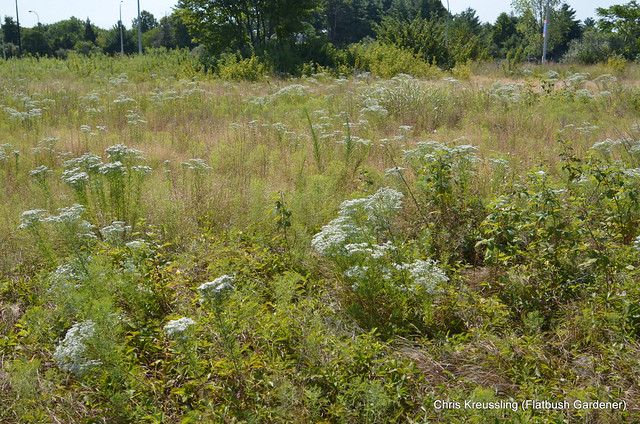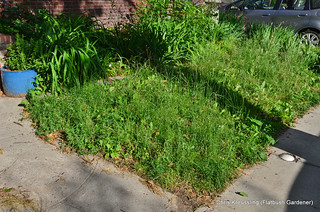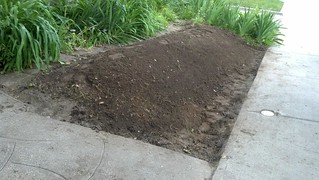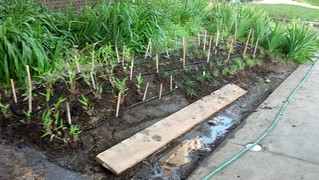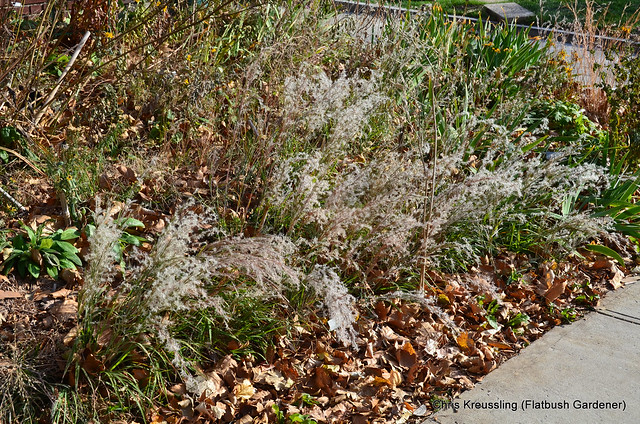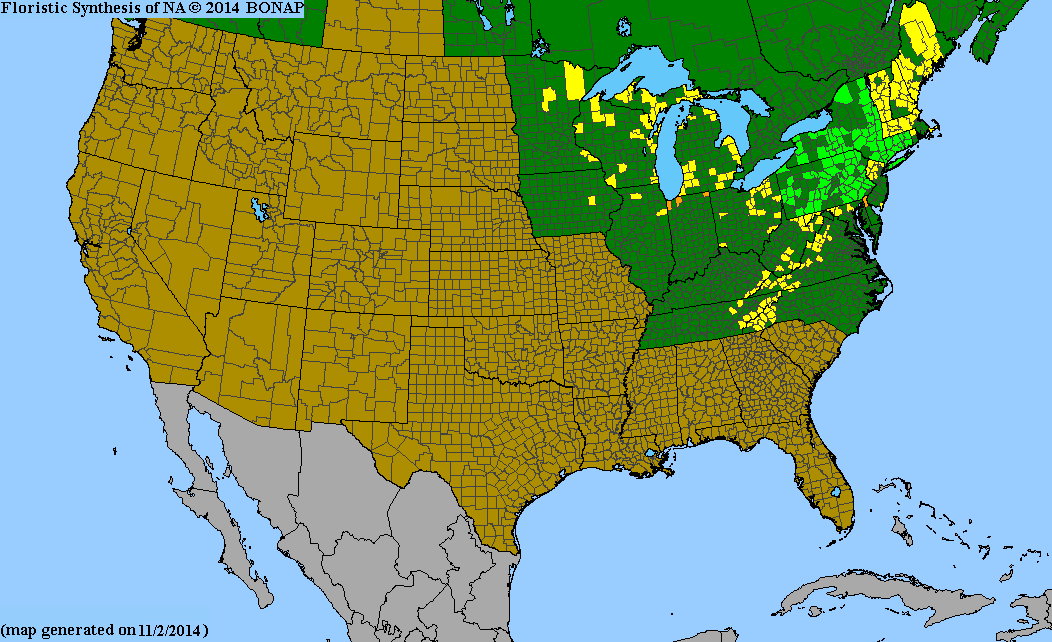I got a query from a reader:
I’m working on a school garden project and we’d like to develop a pollinator garden in several raised beds. Can you recommend some native plants that we should have in our garden? Ideally we’d like to have some perennials and maybe a few anchor bushes. Are there any flowers that we might be able to start inside this spring then transplant? Also, because the students will be observing the pollinators, butterfly attracting plants are preferable to the teachers.
Whole books have been written on this topic, but here are some quick thoughts and references for further research.
Design Notes
- How much space is available for the garden? That will determine how many shrubs could be accommodated. Layout the woody plants first, then plan blocks of plants through the rest of the beds.
- Is it sunny? Shady? Mixed? Trees nearby? That will determine the types of plants that can be grown. Pollinators are more active in the sun, but you can still get plenty of action in shadier gardens. Just make the most of the sun and light you get throughout the day.
- How will it be watered while getting established? Who will water it? What happens during the summer while school is out? After the first year, once established with the right plant selections, watering needs should be minimal.
- Are the raised beds already established, or will they be filled with soil? Many “pollinator” plants fare languish in the rich soils prepared for the vegetables and edibles more typically grown in school gardens, and would prefer ordinary, even “poor,” soils.
- Plant multiples of the same plants in groups and patches, to make them easier for pollinators to find. It also provides a more continuous supply of nectar: if one flower or plant runs dry, another in the same patch can provide.
- See more about what to plant, below.
Plan for Pollinators
Pollinators visit flowers for two main reasons: nectar and pollen. We want to create habitat, not just a buffet. Plan to address the four basic needs: water, food, shelter, and a place to raise young. Host plants are just as important as flowers.
2-day old caterpillars of Battus philenor, pipevine wallowtail, on Aristolochia tomentosa, wooly dutchman’s pipevine, in my garden, June 2011
Even if we limit consideration to insect pollinators, there are many different kinds, including bees, wasps, flies, beetles, butterflies, and moths. Everyone wants butterflies, the divas of the garden. Some are squeamish about bees and wasps, but they really don’t bother people. Any flowers you grow will attract them, so they’re part of the garden already.
Multiple Pollinators on Pycnanthemum muticum, Clustered Mountain-Mint, in my garden, August 2011
Bees, of course, are all-around the most effective pollinators. But not just honeybees. There are scores of native bee species happy to take up residence in a garden.
Multiple nest entrances of Colletes thoracicus (Colletidae), Cellophane Bees, in my garden, May 2008
You can setup nesting boxes for native mason bees and carpenter bees. They’re fascinating to watch, and you can see how the nest tubes get occupied over time.
Bee Houses at the Greenbelt Native Plant Center, Staten Island, May 2010
Monarch butterflies are in steep decline and need our help. Milkweeds are their preferred host plants, so planting milkweeds is the best thing you can do to help monarchs. Several milkweed species are native to NYC. Many other pollinators are attracted to the flowers, as well.
NYC-local ecotype of Asclepias incarnata, Swamp Milkweed, in my garden, June 2008
Plant Native
When planting for pollinators, the most important factors are:
- To get the greatest number and diversity of pollinators, choose plants that have clusters of many small flowers, such as plants in the Asteraceae (asters, daisies, sunflowers, goldenrods, etc) and Lamiaceae (mints) families.
- Include plants that bloom at different times of the year – especially very early and later in the year, when flowers are scarce – to provide a continuous supply of food for both adults and their young.
- Differences in flower size and structure affect which pollinators they can support.
- Insect-host plant associations can be very specific. Plants from different families support different species. So diversify the plant families you grow.
- Plant as many different species as your space can accommodate.
- Don’t forget to use the vertical space: include plants that grow taller and shorter.
- Plant in masses and blocks. Pollinators recognize they’re more likely to find pollen and nectar when several different plants, with many different flowers blooming at different stages, are available to choose from.
- The best plants for pollinators are native to the region, and – as much as possible – from local stock. This is true for both nectar and host plants. Prefer native species over non-native, straight species over cultivars, propagated from local populations over more distant ones.
I adapted this chart from published results of the Pollinator Plant Trial (PDF, 3 pp) at Penn State Southeast Agricultural Research and Extension Center (SEAREC)
My authority for “What’s native?” in my region is the NY Flora Atlas. You sometimes have to watch out for changes in nomenclature, but it’s an excellent resource. Resources for our adjacent states are the Native Plant Society of New Jersey and the Connecticut Botanical Society.
Your best bet for obtaining plants propagated from local stock is to work with nurseries based near you that specialize in native plants. In my area, for starting native plants from seed I recommend Toadshade Wildflower Farm located nearby in New Jersey. They have an astonishing range of native plants available, and seed for many of them. They’re passionate, experienced, and know their plants.
Related Content
FAQ: Where do you get your plants?
The 2014 NYCWW Pollinator Safari of my Gardens
Gardening with the Hymenoptera (and yet not), 2011-07-31
Gardening with the Lepidoptera, 2011-06-11
My blog posts on Butterflies (Lepidoptera), Bees and Wasps (Hymenoptera), Pollinators, Habitat, and Ecology
My Native Plants page
Retail sources for native plants
Me hosting the NYCWW Pollinator Week Safari in my Front Yard, June 2014. Photo: Alan Riback
Links
NY Flora Atlas
Native Plant Society of New Jersey: Plant Lists
Connecticut Botanical Society: Gardening with Native Plants
Biota of North America Program (BONAP): North America Plant Atlas (NAPA)
USDA PLANTS Database
Pollinator Partnership: Regional Planting Guide
Center for Biological Diversity: Native Pollinators
Xerces Society: Bring Bank the Pollinators
Wikipedia: Pollination Syndrome
Toadshade Wildflower Farm
NYC Wildflower Week
Research
Specialist Bees of the Mid-Atlantic and Northeastern United States

